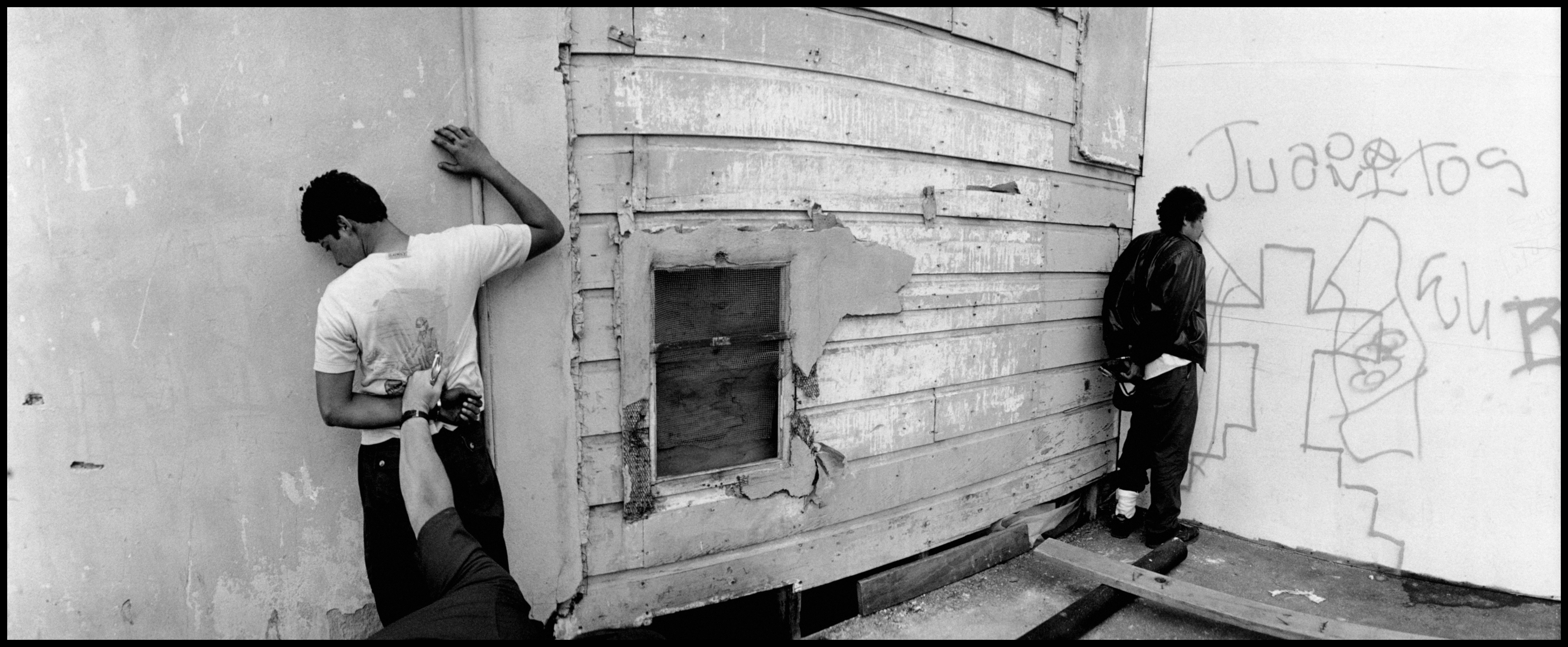
In 1989, Susan Meiselas spent weeks along the United States-Mexico border in California “trying to get a sense of the flow of migrants at that time,” she says. “The scramble across the border, and then the long chain of encounters to move people into different parts of America, is a very elaborate trail.” She walked the desert with migrants and accompanied Border Patrol agents on searches of the bush alongside Interstate 5 and other (often already abandoned) hideouts. One early morning search of a house in downtown San Diego led to the arrest of the two migrants above. “That cat-and-mouse game that was being played then is only more intense now,” Meiselas says.

By the time Stuart Franklin arrived in Kenya in 1988, the country’s permanent white population had fallen by three-quarters since its split from the United Kingdom in the early 1960s. Franklin first learned of the Nairobi Jockey Club, which he calls the “apogee” of segregated white culture in Kenya, from another correspondent living in Nairobi. At that point, black Africans were allowed to join the Jockey Club, but few had. “The white people weren’t nasty. They weren’t racist or anything. It’s just they got used to a kind of class divide,” Franklin says. “I think the photo tells that story quite well.”

In 1962, Constantine Manos was a young man, early in his career and searching for his roots, when he caught this early morning newspaper reader in the small town of Chania in Greece. Manos was born in Columbia, South Carolina, to Greek parents, but had never been to the old country before he took the photos that would eventually become A Greek Portfolio, his first collection. “I think a good picture, a successful picture, is a surprise,” he says. “It’s something we’ve never seen before and will never see again.” If Manos had arrived at the beach just a half-hour later, the man—and one of Manos’ first iconic shots—might have been gone.
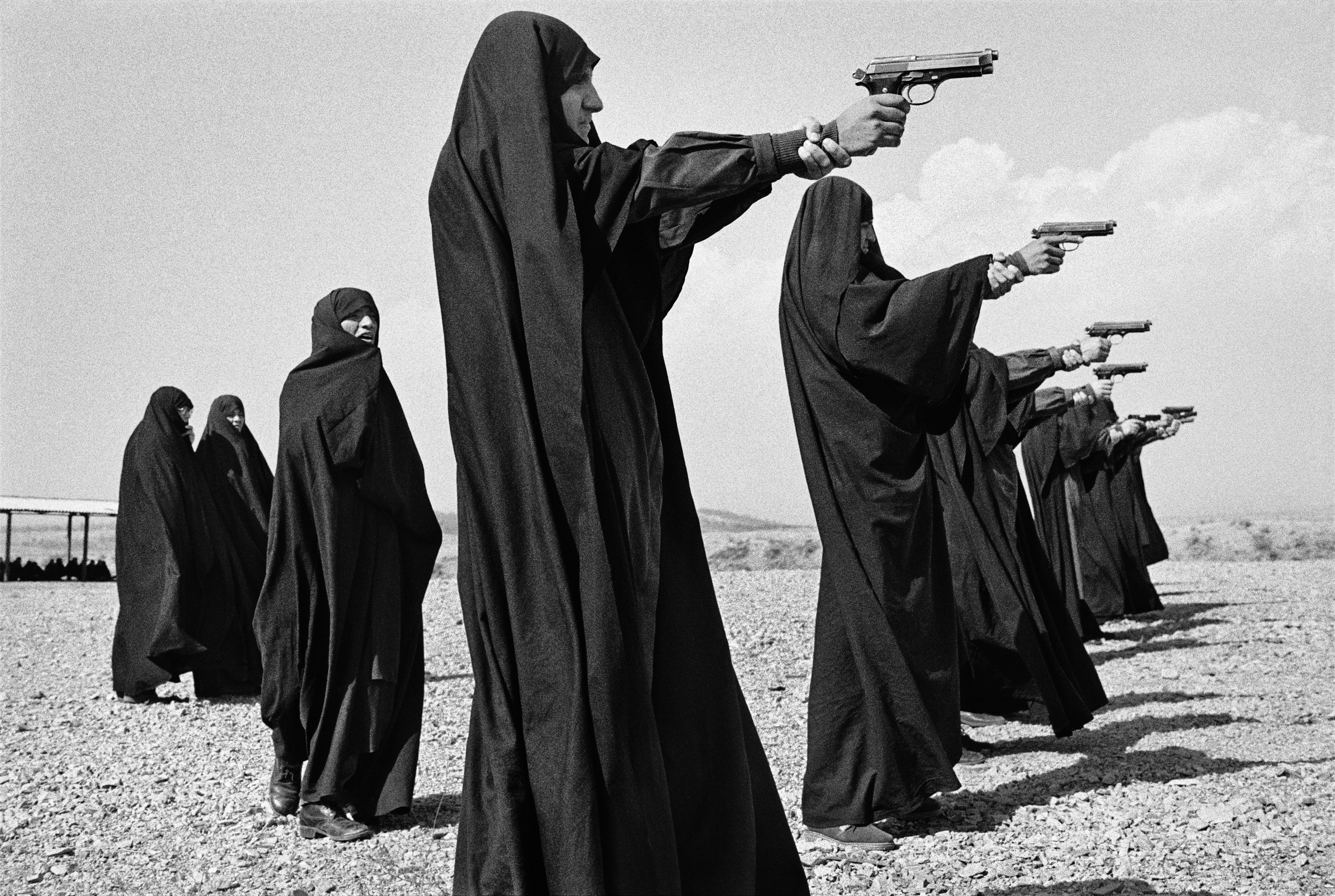
Starting in 1986, and continuing throughout the remainder of the Iran-Iraq War, Jean Gaumy spent months at a time shadowing Iranian revolutionaries. “I was one of the rare Westerners,” Gaumy says of his first visit, when he was stopped at gunpoint on suspicion of espionage. Gaumy followed a militia of Iranian women as they performed training exercises outside Tehran—three to four hours of footraces, rifle-shooting, grenade-throwing, and target practice with pistols. He could tell that the Iranians saw him as a conduit for their global message. “The Iranians knew that the photo would infuriate Westerners,” he says. But they hoped that the symbolism—spread via Western magazines—would prove to the rest of the Third World “that with such determined women, Iran was still the only true revolutionary leader.”
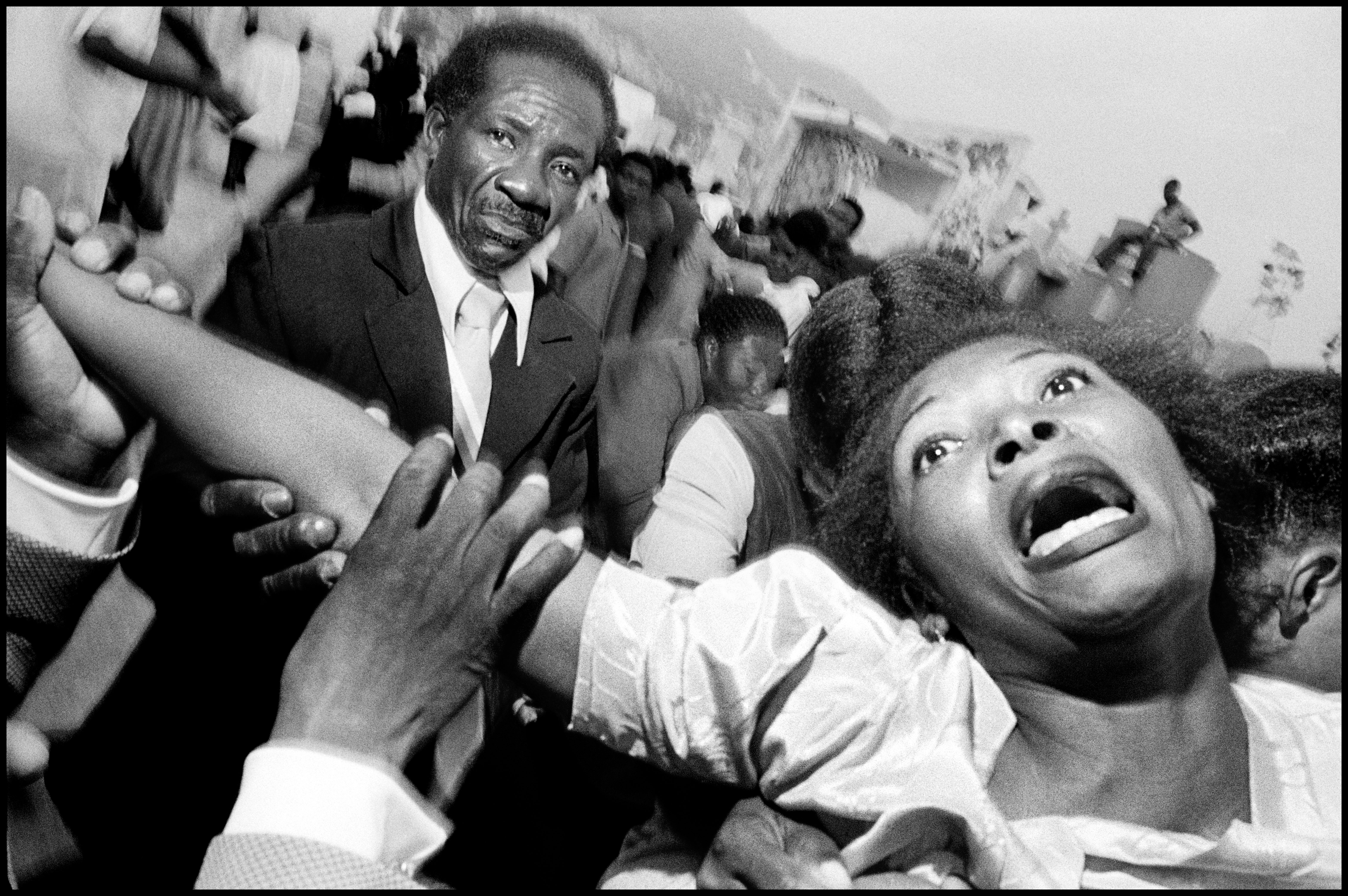
When Bruce Gilden visited Port-au-Prince, Haiti, in 1988, he spent almost every evening in the city’s big cemetery. “That’s where the people were,” he says. He followed funeral processions as they wound through the streets, and began taking his camera with him as soon as he realized people didn’t mind. During some processions, he noticed that several mourners shrieked in dramatized despair. “They would sound like a bunch of cackling chickens because they would build themselves up to such a feverish pitch—and then they would faint,” he says. “It’s almost, for me, a rock ‘n’ roll picture: someone screaming and the guy has her arm. He’s holding her arm like he’d be holding a guitar.”

Throughout the spring of 2002, Israeli troops invaded several major cities along the West Bank in an attempt to quash the Palestinian uprising. “I was sitting on the edge of my chair here at home in Canada, wondering what would happen,” Larry Towell says. By May, the Israeli military had moved out, and Towell traveled to Palestine to see the destruction it had left in its wake. Outside the concrete skeleton of what was once a house in the Balata refugee camp in Nablus, he found residents picking through the wreckage of their former home. Once inside, he discovered a clear view of the local cemetery through a hole blasted in the building’s stairway wall. More than a decade and a half later, the image’s layers of destruction remain just as relevant. “It saddens me that this occupation seems to be grinding on and on and on,” Towell says.
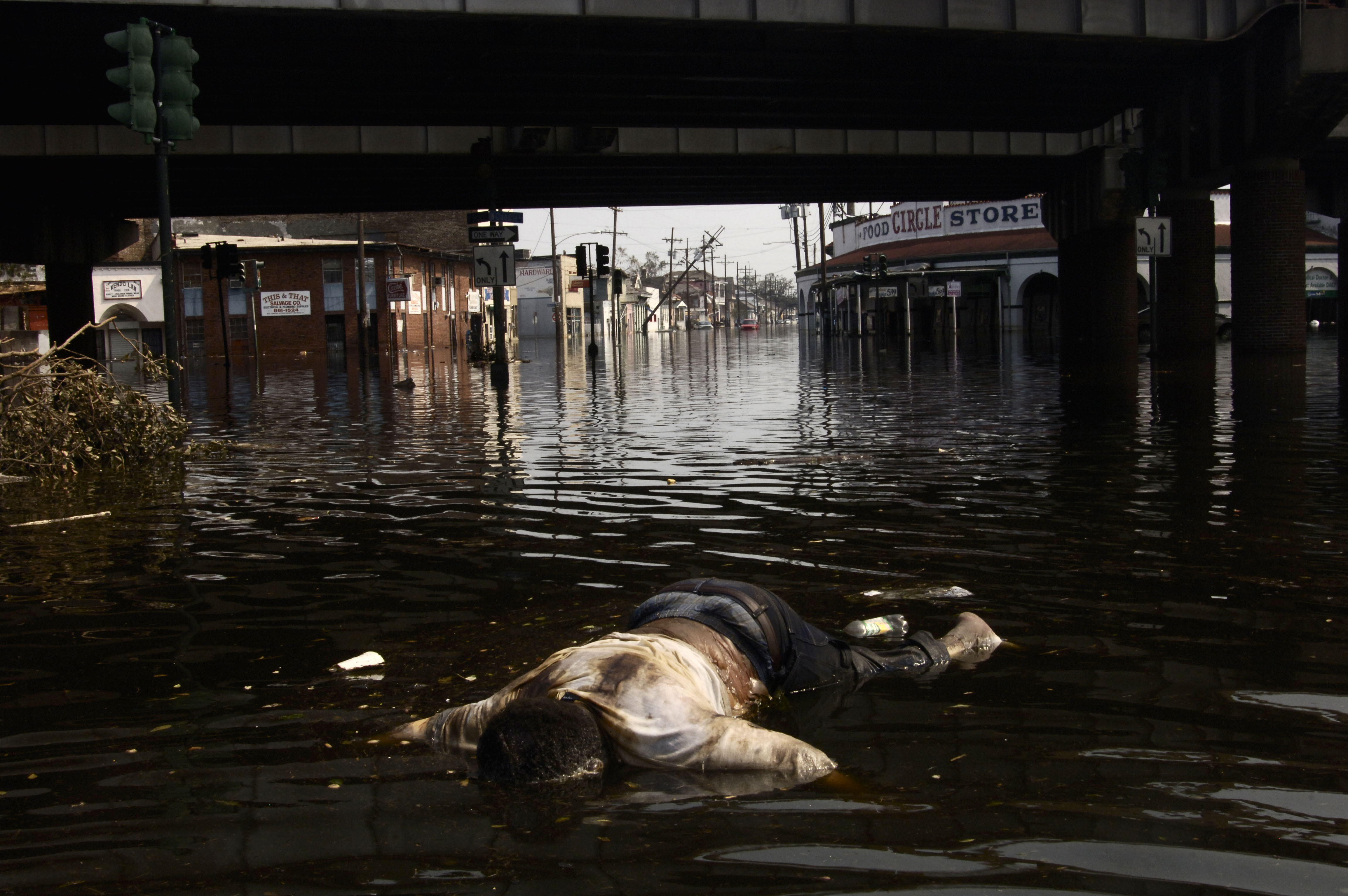
When Hurricane Katrina made landfall in late August of 2005, Thomas Dworzak was 1,300 miles away in New York. As soon as it became clear that the storm was bigger and more destructive than anyone expected, Dworzak flew down to Baton Rouge and drove into New Orleans (its airport had closed). On September 3rd, five days after the levees failed and the city flooded, he put on a pair of swim trunks and wandered around the submerged city. “There was a little bit of walking and a lot of wading,” Dworzak says. “I’d been to New Orleans before, but it was like another city … like a ghost town almost. Houses were gone, [the city] was covered in water, there were dead bodies floating—I hadn’t seen that anywhere in the Western world before.” He was chest-deep in the floodwater when he came upon the floating body of one of the storm’s estimated 1,800 victims. He knew it would make for a gruesome image, but Dworzak didn’t want to take a beautiful photo of a horrific event.
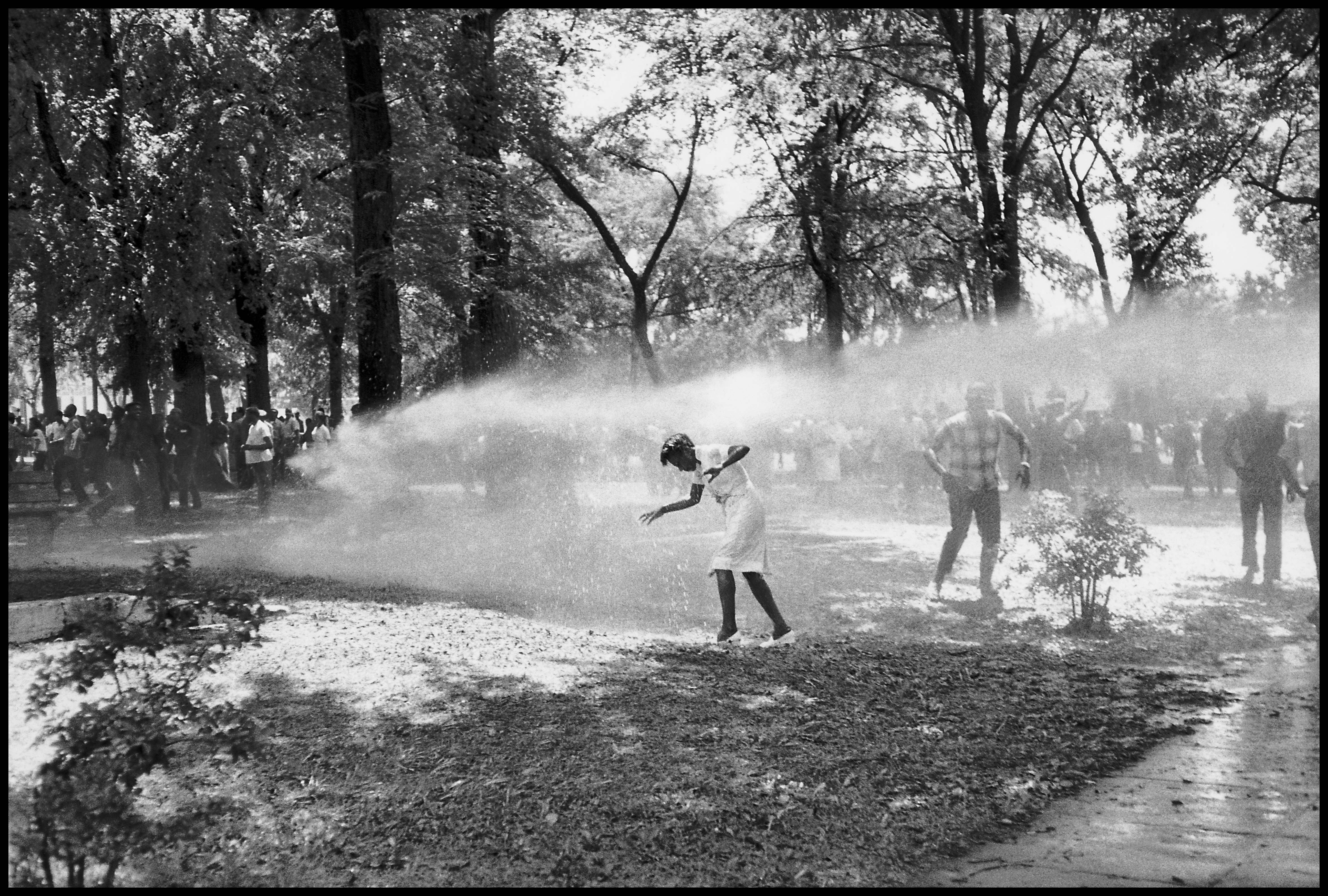
Bruce Davidson began photographing the civil rights movement in 1961, when he boarded a bus with the Freedom Riders in Montgomery, Alabama. By 1963, he was following the Birmingham Campaign demonstrations, where police regularly turned fire hoses and dogs on peaceful marchers “I didn’t have a telephoto lens with me, so I had to run in and take a quick snap and run way before the cops got me,” Davidson says. “In fact, I am glad I didn’t have a long lens because I could show the environment.” Davidson believes the odd juxtaposition—the police violence against the calm beauty of the park—is what makes the frame so transfixing.
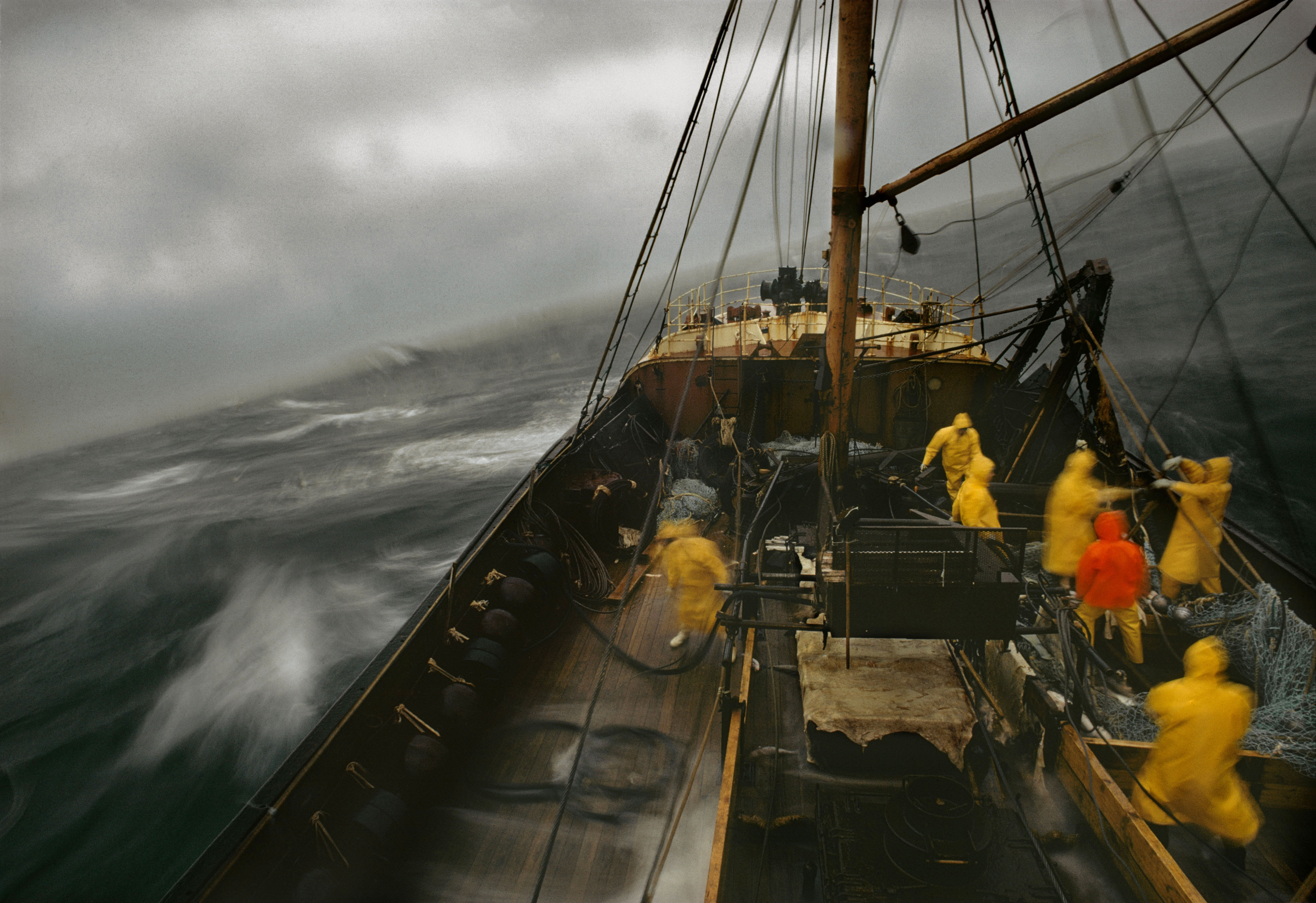
In the winter of 1970, Harry Gruyaert boarded a trawler in north England, and soon found himself somewhere in the middle of the North Atlantic. For nearly two weeks, the boat pitched back and forth in winter storms, as the crew hauled nets full of fish over the sides of the vessel. “I was sick straightaway,” Gruyaert says. The captain guided the boat from the cockpit, tracking the fish with instinct honed over decades on the sea. “He had some magnetic thing in him,” Gruyaert says. Now, nearly 50 years later, Gruyaert still remembers the unruly waves, the terrible food, and the inescapable smell of oil and fish. “The funny thing is, going back on land, you kind of want to go back to the sea, because in the sea you’re free,” he says. “Your life is simple: You eat, you work, that’s it.”
A version of this story originally appeared in the July 2017 issue of Pacific Standard, which was produced in partnership with Magnum Photos.





